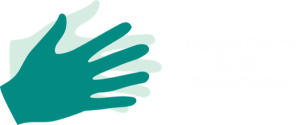In this article, we are going to review important facts you need to know about infection and infectious diseases.
Infections are spread in 3 ways (contact, droplet, airborne). Knowing how an infection spreads means that you can try to PREVENT the spread; you just need to follow the personal protective equipment and hand hygiene guidelines for each one.
To become infected you need a series of things to take place (chain of infection) and the chain can be broken at ANY ONE of the 6 links in the chain:
Chain Link 1 – Infectious Agent
This is simply a germ that can cause infection.
Break the chain by:
- Washing your hands properly
- Not touching your face with a contaminated hand
- Disinfecting surfaces you touch frequently
Chain Link 2 – Reservoir
A place where germs can live and multiply. The ‘place’ can be a person, object or surface.
- Person – germs can live and multiply on your hands, and skin
- Object – germs can live and multiply on equipment like an eftpos machine, or pen
- Surface – germs can live and multiply on surfaces such as beds, desks or chair
Break the chain by:
- Treat everyone as if they have an infectious disease
- Take precautions to prevent transmission (PPE, cleaning)
- Disinfecting surfaces you touch frequently
Chain Link 3 – Portal of Exit
This is the how germs escape from a reservoir. Germs (infectious agent) might sit on an EFTPOS machine (reservoir). A worker comes along and touches the machine, and some of the germs move onto their hands. Their hands are now the ‘portal of exit’ – the way that the germs can now move from the machine to another place.
Other ‘portals’ can be the air people breathe from their lungs, especially when they cough (for droplet and airborne spread) – this is why social distancing is so important currently and is your best defence against becoming infected with COVID-19
Break the chain by:
- Using cough and sneeze etiquette, or wear a mask when appropriate
- Discarding tissues and paper properly
- Disinfecting surfaces you touch frequently
Chain Link 4 – Mode of Transmission
This is how the germs move, or spread, from one place to another. This can happen in a number of ways, such as a workers’ hands touching dirty equipment, or through the air (coughs, sneezes).
Break the chain by:
- Not shaking hands or hugging
- Cleaning your hands after touching surfaces
- Not touching your face with unwashed hands
- Disinfecting surfaces you touch frequently
Chain link 5 – Portal of Entry
This is how the germs move from the reservoir to a person. They can enter wounds and cuts, can be swallowed or be breathed in.
Break the chain by:
- Cleaning your hands after touching surfaces
- Not touching your face with unwashed hands
- Using Personal Protective Equipment (PPE)
Chain Link 6 – Vulnerable Hosts
People who can’t fight infectious diseases effectively include very young children, older people, people who are ill or who are receiving particular medicines that reduce their immunity, people with long-term health conditions like diabetes and those who are physically weak due to, for instance, malnutrition or dehydration. These people are vulnerable to developing infection when their bodies are invaded by germs.
Break the chain by:
- Boosting your immune system – drink water, sleep well, eat a balanced diet
- Using Personal Protective Equipment (PPE)
Hand hygiene is the single most effective way to prevent the spread of infection and infectious diseases.
Hand hygiene must be done properly to be effective. Do it right!
Click here to download this free Hand Hygiene Poster.


